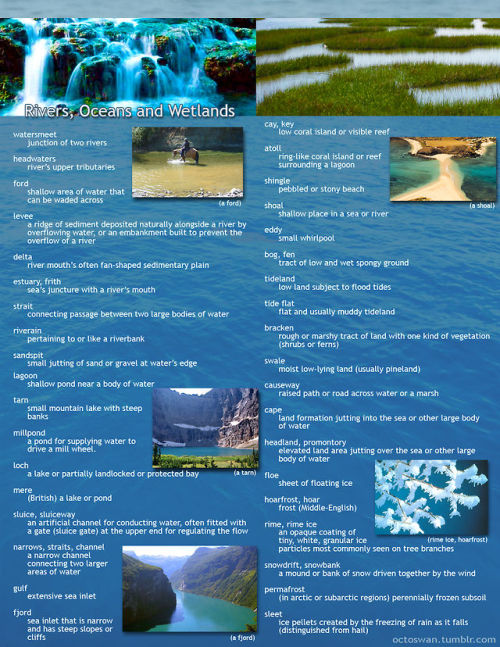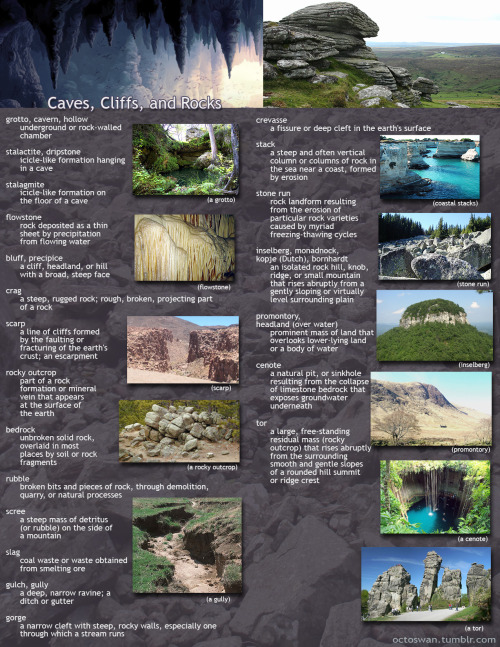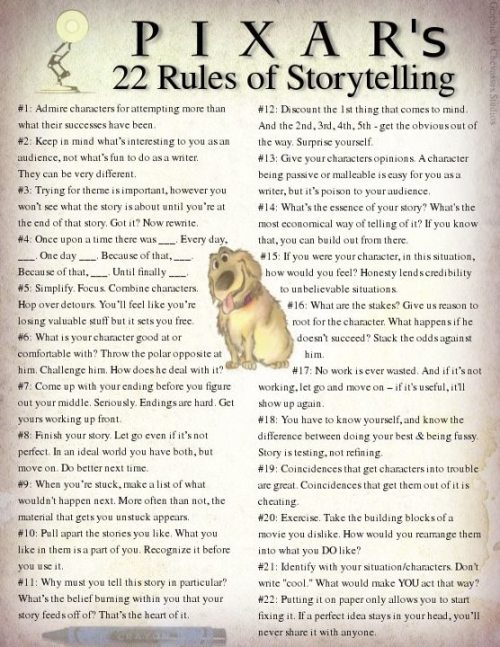
400 posts
Character/Genre Based Names [Vintage]
![Character/Genre Based Names [Vintage]](https://64.media.tumblr.com/43ed3d123d3f7eb9b1bc25443cf56e8f/tumblr_nb7d7msAme1tkgjt3o4_500.png)
![Character/Genre Based Names [Vintage]](https://64.media.tumblr.com/9d77e4e21cf5b3672c54e5577b184bd3/tumblr_nb7d7msAme1tkgjt3o5_500.png)
![Character/Genre Based Names [Vintage]](https://64.media.tumblr.com/72d2ba0e6fe601e034faae4f8afd07eb/tumblr_nb7d7msAme1tkgjt3o1_500.png)
![Character/Genre Based Names [Vintage]](https://64.media.tumblr.com/ccdffb863e018d22b342fcd7fc6fa255/tumblr_nb7d7msAme1tkgjt3o2_500.png)
![Character/Genre Based Names [Vintage]](https://64.media.tumblr.com/943dbb4a4f59cf5bd21af252fa1c1184/tumblr_nb7d7msAme1tkgjt3o3_500.png)
Character/Genre Based Names [Vintage]
Writing Resources
-
 d0g-m0tif liked this · 1 year ago
d0g-m0tif liked this · 1 year ago -
 porterpotty liked this · 1 year ago
porterpotty liked this · 1 year ago -
 belonmasket liked this · 1 year ago
belonmasket liked this · 1 year ago -
 inkdropsonrosequinn reblogged this · 1 year ago
inkdropsonrosequinn reblogged this · 1 year ago -
 inkdropsonrosequinn reblogged this · 1 year ago
inkdropsonrosequinn reblogged this · 1 year ago -
 grandmaster-paradox liked this · 2 years ago
grandmaster-paradox liked this · 2 years ago -
 universallydesigndjstudent liked this · 2 years ago
universallydesigndjstudent liked this · 2 years ago -
 siyi-draws liked this · 2 years ago
siyi-draws liked this · 2 years ago -
 demonwolfgoodies liked this · 2 years ago
demonwolfgoodies liked this · 2 years ago -
 cyber-lix liked this · 2 years ago
cyber-lix liked this · 2 years ago -
 big-scary-bird liked this · 2 years ago
big-scary-bird liked this · 2 years ago -
 lireb-librarian liked this · 2 years ago
lireb-librarian liked this · 2 years ago -
 myheartismadeofstars reblogged this · 2 years ago
myheartismadeofstars reblogged this · 2 years ago -
 myheartismadeofstars liked this · 3 years ago
myheartismadeofstars liked this · 3 years ago -
 manyarchives reblogged this · 3 years ago
manyarchives reblogged this · 3 years ago -
 hydrangeahelper reblogged this · 3 years ago
hydrangeahelper reblogged this · 3 years ago -
 loveulovell liked this · 3 years ago
loveulovell liked this · 3 years ago -
 jaqdawks liked this · 3 years ago
jaqdawks liked this · 3 years ago -
 gamingperipety liked this · 3 years ago
gamingperipety liked this · 3 years ago -
 bbbellamywrites liked this · 3 years ago
bbbellamywrites liked this · 3 years ago -
 drogonfires liked this · 4 years ago
drogonfires liked this · 4 years ago -
 nineteentwenty-eight reblogged this · 4 years ago
nineteentwenty-eight reblogged this · 4 years ago -
 itscalamitybitches-blog liked this · 4 years ago
itscalamitybitches-blog liked this · 4 years ago -
 rosyzhaorph liked this · 4 years ago
rosyzhaorph liked this · 4 years ago -
 mtfunkzoo reblogged this · 4 years ago
mtfunkzoo reblogged this · 4 years ago -
 gramice liked this · 4 years ago
gramice liked this · 4 years ago -
 chauceux liked this · 4 years ago
chauceux liked this · 4 years ago -
 averagecatenjoy liked this · 4 years ago
averagecatenjoy liked this · 4 years ago -
 cinnamon-ghoul liked this · 4 years ago
cinnamon-ghoul liked this · 4 years ago -
 burttheflamingo liked this · 4 years ago
burttheflamingo liked this · 4 years ago -
 dejavcu liked this · 4 years ago
dejavcu liked this · 4 years ago -
 luckydesigns liked this · 4 years ago
luckydesigns liked this · 4 years ago -
 shantievelasco liked this · 4 years ago
shantievelasco liked this · 4 years ago -
 chaosintended liked this · 4 years ago
chaosintended liked this · 4 years ago -
 nothisbumblebee reblogged this · 4 years ago
nothisbumblebee reblogged this · 4 years ago -
 hanseswife2021-blog liked this · 4 years ago
hanseswife2021-blog liked this · 4 years ago
More Posts from Inkdropsonrosequinn
Common Occupations in the Middle Ages
Almoners: ensured the poor received alms.
Atilliator: skilled castle worker who made crossbows.
Baliff: in charge of allotting jobs to the peasants, building repair, and repair of tools used by the peasants.
Barber: someone who cut hair. Also served as dentists, surgeons and blood-letters.
Blacksmith: forged and sharpened tools and weapons, beat out dents in armor, made hinges for doors, and window grills. Also referred to as Smiths.
Bottler: in charge of the buttery or bottlery.
Butler: cared for the cellar and was in charge of large butts and little butts (bottles) of wine and beer. Under him a staff of people might consist of brewers, tapsters, cellarers, dispensers, cupbearers and dapifer.
Carder: someone who brushed cloth during its manufacture.
Carpenter: built flooring, roofing, siege engines, furniture, panelling for rooms, and scaffoling for building.
Carters: workmen who brought wood and stone to the site of a castle under construction.
Castellan: resident owner or person in charge of a castle (custodian).
Chamberlain: responsible for the great chamber and for the personal finances of the castellan.
Chaplain: provided spirtual welfare for laborers and the castle garrison. The duties might also include supervising building operations, clerk, and keeping accounts. He also tended to the chapel.
Clerk: a person who checked material costs, wages, and kept accounts.
Constable: a person who took care (the governor or warden) of a castle in the absence of the owner. This was sometimes bestowed upon a great baron as an honor and some royal castles had hereditary constables.
Cook: roasted, broiled, and baked food in the fireplaces and ovens.
Cottars: the lowest of the peasantry. Worked as swine-herds, prison guards, and did odd jobs.
Ditcher: worker who dug moats, vaults, foundations and mines.
Dyer: someone who dyed cloth in huge heated vats during its manufacture.
Ewerer: worker who brought and heated water for the nobles.
Falconer: highly skilled expert responsible for the care and training of hawks for the sport of falconry.
Fuller: worker who shrinks & thickens cloth fibers through wetting & beating the material.
Glaziers: a person who cut and shaped glass.
Gong Farmer: a latrine pit emptier.
Hayward: someone who tended the hedges.
Herald: knights assistant and an expert advisor on heraldry.
Keeper of the Wardrobe: in charge of the tailors and laundress.
Knight: a professional soldier. This was achieved only after long and arduous training which began in infancy.
Laird: minor baron or small landlord.
Marshal: officer in charge of a household’s horses, carts, wagons, and containers. His staff included farriers, grooms, carters, smiths and clerks. He also oversaw the transporting of goods.
Master Mason: responsible for the designing and overseeing the building of a structure.
Messengers: servants of the lord who carried receipts, letters, and commodities.
Miner: skilled professional who dug tunnels for the purpose of undermining a castle.
Minstrels: part of of the castle staff who provided entertainment in the form of singing and playing musical instruments.
Porter: took care of the doors (janitor), particularly the main entrance. Responsible for the guardrooms. The person also insured that no one entered or left the castle withour permission. Also known as the door-ward.
Reeve: supervised the work on lord’s property. He checked that everyone began and stopped work on time, and insured nothing was stolen. Senior officer of a borough.
Sapper: an unskilled person who dug a mine or approach tunnel.
Scullions: responsible for washing and cleaning in the kitchen.
Shearmen: a person who trimmed the cloth during its manufacture.
Shoemaker: a craftsman who made shoes. Known also as Cordwainers.
Spinster: a name given to a woman who earned her living spinning yarn. Later this was expanded and any unmarried woman was called a spinster.
Steward: took care of the estate and domestic administration. Supervised the household and events in the great hall. Also referred to as a Seneschal.
Squire: attained at the age of 14 while training as a knight. He would be assigned to a knight to carry and care for the weapons and horse.
Watchmen: an official at the castle responsible for security. Assited by lookouts (the garrison).
Weaver: someone who cleaned and compacted cloth, in association with the Walker and Fuller.
Woodworkers: tradesmen called Board-hewers who worked in the forest, producing joists and beams.
Other medieval jobs included:
tanners, soap makers, cask makers, cloth makers, candle makers (chandlers), gold and silver smiths, laundresses, bakers, grooms, pages, huntsmen, doctors, painters, plasterers, and painters, potters, brick and tile makers, glass makers, shipwrights, sailors, butchers, fishmongers, farmers, herdsmen, millers, the clergy, parish priests, members of the monastic orders, innkeepers, roadmenders, woodwards (for the forests). slingers. Other Domestic jobs inside the castle or manor:
Personal atendants- ladies-in-waiting, chamber maids, doctor.
The myriad of people involved in the preparation and serving of meals- brewers, poulterer, fruiterers, slaughterers, dispensers, cooks and the cupbearers.
By Lise Hull READ MORE





I made these as a way to compile all the geographical vocabulary that I thought was useful and interesting for writers. Some descriptors share categories, and some are simplified, but for the most part everything is in its proper place. Not all the words are as useable as others, and some might take tricky wording to pull off, but I hope these prove useful to all you writers out there!
(save the images to zoom in on the pics)
Story Structures for your Next WIP
hello, hello. this post will be mostly for my notes. this is something I need in to be reminded of for my business, but it can also be very useful and beneficial for you guys as well.
everything in life has structure and storytelling is no different, so let’s dive right in :)
First off let’s just review what a story structure is :
a story is the backbone of the story, the skeleton if you will. It hold the entire story together.
the structure in which you choose your story will effectively determine how you create drama and depending on the structure you choose it should help you align your story and sequence it with the conflict, climax, and resolution.
1. Freytag's Pyramid
this first story structure i will be talking about was named after 19th century German novelist and playwright.
it is a five point structure that is based off classical Greek tragedies such as Sophocles, Aeschylus and Euripedes.
Freytag's Pyramid structure consists of:
Introduction: the status quo has been established and an inciting incident occurs.
Rise or rising action: the protagonist will search and try to achieve their goal, heightening the stakes,
Climax: the protagonist can no longer go back, the point of no return if you will.
Return or fall: after the climax of the story, tension builds and the story inevitably heads towards...
Catastrophe: the main character has reached their lowest point and their greatest fears have come into fruition.
this structure is used less and less nowadays in modern storytelling mainly due to readers lack of appetite for tragic narratives.

2. The Hero's Journey
the hero's journey is a very well known and popular form of storytelling.
it is very popular in modern stories such as Star Wars, and movies in the MCU.
although the hero's journey was inspired by Joseph Campbell's concept, a Disney executive Christopher Vogler has created a simplified version:
The Ordinary World: The hero's everyday routine and life is established.
The Call of Adventure: the inciting incident.
Refusal of the Call: the hero / protagonist is hesitant or reluctant to take on the challenges.
Meeting the Mentor: the hero meets someone who will help them and prepare them for the dangers ahead.
Crossing the First Threshold: first steps out of the comfort zone are taken.
Tests, Allie, Enemies: new challenges occur, and maybe new friends or enemies.
Approach to the Inmost Cave: hero approaches goal.
The Ordeal: the hero faces their biggest challenge.
Reward (Seizing the Sword): the hero manages to get ahold of what they were after.
The Road Back: they realize that their goal was not the final hurdle, but may have actually caused a bigger problem than before.
Resurrection: a final challenge, testing them on everything they've learned.
Return with the Elixir: after succeeding they return to their old life.
the hero's journey can be applied to any genre of fiction.

3. Three Act Structure:
this structure splits the story into the 'beginning, middle and end' but with in-depth components for each act.
Act 1: Setup:
exposition: the status quo or the ordinary life is established.
inciting incident: an event sets the whole story into motion.
plot point one: the main character decided to take on the challenge head on and she crosses the threshold and the story is now progressing forward.
Act 2: Confrontation:
rising action: the stakes are clearer and the hero has started to become familiar with the new world and begins to encounter enemies, allies and tests.
midpoint: an event that derails the protagonists mission.
plot point two: the hero is tested and fails, and begins to doubt themselves.
Act 3: Resolution:
pre-climax: the hero must chose between acting or failing.
climax: they fights against the antagonist or danger one last time, but will they succeed?
Denouement: loose ends are tied up and the reader discovers the consequences of the climax, and return to ordinary life.

4. Dan Harmon's Story Circle
it surprised me to know the creator of Rick and Morty had their own variation of Campbell's hero's journey.
the benefit of Harmon's approach is that is focuses on the main character's arc.
it makes sense that he has such a successful structure, after all the show has multiple seasons, five or six seasons? i don't know not a fan of the show.
the character is in their comfort zone: also known as the status quo or ordinary life.
they want something: this is a longing and it can be brought forth by an inciting incident.
the character enters and unfamiliar situation: they must take action and do something new to pursue what they want.
adapt to it: of course there are challenges, there is struggle and begin to succeed.
they get what they want: often a false victory.
a heavy price is paid: a realization of what they wanted isn't what they needed.
back to the good old ways: they return to their familiar situation yet with a new truth.
having changed: was it for the better or worse?
i might actually make a operate post going more in depth about dan harmon's story circle.
5. Fichtean Curve:
the fichtean curve places the main character in a series of obstacles in order to achieve their goal.
this structure encourages writers to write a story packed with tension and mini-crises to keep the reader engaged.
The Rising Action
the story must start with an inciting indecent.
then a series of crisis arise.
there are often four crises.
2. The Climax:
3. Falling Action
this type of story telling structure goes very well with flash-back structured story as well as in theatre.

6. Save the Cat Beat Sheet:
this is another variation of a three act structure created by screenwriter Blake Snyder, and is praised widely by champion storytellers.
Structure for Save the Cat is as follows: (the numbers in the brackets are for the number of pages required, assuming you're writing a 110 page screenplay)
Opening Image [1]: The first shot of the film. If you’re starting a novel, this would be an opening paragraph or scene that sucks readers into the world of your story.
Set-up [1-10]. Establishing the ‘ordinary world’ of your protagonist. What does he want? What is he missing out on?
Theme Stated [5]. During the setup, hint at what your story is really about — the truth that your protagonist will discover by the end.
Catalyst [12]. The inciting incident!
Debate [12-25]. The hero refuses the call to adventure. He tries to avoid the conflict before they are forced into action.
Break into Two [25]. The protagonist makes an active choice and the journey begins in earnest.
B Story [30]. A subplot kicks in. Often romantic in nature, the protagonist’s subplot should serve to highlight the theme.
The Promise of the Premise [30-55]. Often called the ‘fun and games’ stage, this is usually a highly entertaining section where the writer delivers the goods. If you promised an exciting detective story, we’d see the detective in action. If you promised a goofy story of people falling in love, let’s go on some charmingly awkward dates.
Midpoint [55]. A plot twist occurs that ups the stakes and makes the hero’s goal harder to achieve — or makes them focus on a new, more important goal.
Bad Guys Close In [55-75]. The tension ratchets up. The hero’s obstacles become greater, his plan falls apart, and he is on the back foot.
All is Lost [75]. The hero hits rock bottom. He loses everything he’s gained so far, and things are looking bleak. The hero is overpowered by the villain; a mentor dies; our lovebirds have an argument and break up.
Dark Night of the Soul [75-85-ish]. Having just lost everything, the hero shambles around the city in a minor-key musical montage before discovering some “new information” that reveals exactly what he needs to do if he wants to take another crack at success. (This new information is often delivered through the B-Story)
Break into Three [85]. Armed with this new information, our protagonist decides to try once more!
Finale [85-110]. The hero confronts the antagonist or whatever the source of the primary conflict is. The truth that eluded him at the start of the story (established in step three and accentuated by the B Story) is now clear, allowing him to resolve their story.
Final Image [110]. A final moment or scene that crystallizes how the character has changed. It’s a reflection, in some way, of the opening image.
(all information regarding the save the cat beat sheet was copy and pasted directly from reedsy!)

7. Seven Point Story Structure:
this structure encourages writers to start with the at the end, with the resolution, and work their way back to the starting point.
this structure is about dramatic changes from beginning to end
The Hook. Draw readers in by explaining the protagonist’s current situation. Their state of being at the beginning of the novel should be in direct contrast to what it will be at the end of the novel.
Plot Point 1. Whether it’s a person, an idea, an inciting incident, or something else — there should be a "Call to Adventure" of sorts that sets the narrative and character development in motion.
Pinch Point 1. Things can’t be all sunshine and roses for your protagonist. Something should go wrong here that applies pressure to the main character, forcing them to step up and solve the problem.
Midpoint. A “Turning Point” wherein the main character changes from a passive force to an active force in the story. Whatever the narrative’s main conflict is, the protagonist decides to start meeting it head-on.
Pinch Point 2. The second pinch point involves another blow to the protagonist — things go even more awry than they did during the first pinch point. This might involve the passing of a mentor, the failure of a plan, the reveal of a traitor, etc.
Plot Point 2. After the calamity of Pinch Point 2, the protagonist learns that they’ve actually had the key to solving the conflict the whole time.
Resolution. The story’s primary conflict is resolved — and the character goes through the final bit of development necessary to transform them from who they were at the start of the novel.
(all information regarding the seven point story structure was copy and pasted directly from reedsy!)

i decided to fit all of them in one post instead of making it a two part post.
i hope you all enjoy this post and feel free to comment or reblog which structure you use the most, or if you have your own you prefer to use! please share with me!
if you find this useful feel free to reblog on instagram and tag me at perpetualstories
Follow my tumblr and instagram for more writing and grammar tips and more!

Pixars 22 Rules of Story Telling
Resources For Describing Emotion

Emotions
Without Making Your Character Feel Too Self Aware
Showing Emotion Without Telling About It
Emotions Associated With Body Language
Telling Readers What The Character Doesn’t Want To Show
Hiding Emotions
Expressing Cardinal Emotions: Masculine vs. Feminine
Writing Extreme Emotion Without Melodrama
Specific Emotions
Conveying Shock
Conveying Embarrassment
Conveying Disappointment
Conveying Love/Attraction
Conveying Annoyance
Conveying Relief
Conveying Uncertainty
Conveying Impatience
Conveying Shame
Conveying Resentment
Conveying Panic
Conveying Guilt
Conveying Desperation
Conveying Sarcasm & Verbal Disrespect
Conveying Confusion
Conveying Stubbornness
Conveying Frustration
Conveying Indifference
Conveying Indignation
Conveying Confidence & Pride
Conveying Smugness
Conveying Enthusiasm
Conveying Curiosity
Conveying Hopefulness
Conveying Unease
Conveying Reluctance
Conveying Worry
Conveying Humility & Meekness
Conveying Happiness & Joy
Conveying Amusement
Conveying Disgust
Conveying Resignation
Conveying Jealousy
Conveying Anticipation
Conveying Contentment
Conveying Defeat
Conveying Excitement
Conveying Fear
Conveying Hatred
Conveying Hurt
Conveying Being Overwhelmed
Conveying Sadness & Grief
Conveying Satisfaction
Conveying Somberness
Conveying Sympathy & Empathy
Conveying Wariness
Conveying Defensiveness
Conveying Desire
Conveying Doubt
Conveying Energy
Conveying Exhaustion
Conveying Hunger
Conveying Loneliness
Conveying Physical Pain
Emotional Wounds
A Role Model Who Disappoints
A Sibling’s Betrayal
A Speech Impediment
Becoming a Caregiver at an Early Age
Being Bullied
Being Fired or Laid Off
Being Held Captive
Being Mugged
Being Publicly Humiliated
Being Raised by Neglectful Parents
Being Raised by Overprotective Parents
Being So Beautiful It’s All People See
Being the Victim of a Vicious Rumor
Being Stalked
Being Trapped in a Collapsed Building
Being Unfairly Blamed For The Death of Another
Childhood Sexual Abuse (by a family member or known person)
Discovering One’s Parent is a Monster
Discovering One’s Sibling was Abused
Experiencing a Miscarriage or Stillbirth
Failing At School
Failing To Do The Right Thing
Financial Ruin Due To A Spouse’s Irresponsibility
Finding Out One’s Child Was Abused
Finding Out One Was Adopted
Getting Lost In a Natural Environment
Growing Up In A Cult
Growing Up in a Dangerous Neighborhood
Growing Up In Foster Care
Growing Up In The Public Eye
Growing Up In The Shadow of a Successful Sibling
Growing Up with a Sibling Who Has a Chronic Disability or Illness
Having Parents Who Favored One Child Over Another
Having To Kill Another Person To Survive
Infertility
Infidelity (emotional or physical)
Losing a Limb
Losing a Loved One To A Random Act of Violence
Making a Very Public Mistake
Overly Critical or Strict Parents
Physical Disfigurement
Rejection By One’s Peers
Telling The Truth But Not Being Believed
The Death of a Child On One’s Watch
Victimization via Identity Theft
Watching A Loved One Die
Wrongful Imprisonment
Spending Time In Jail
Suffering From a Learning Disability
Motivation
Achieving Spiritual Enlightenment
Avoiding Certain Death
Avoiding Financial Ruin
Beating a Diagnosis or Condition
Being Acknowledged and Appreciated by Family
Being a Leader of Others
Being the Best At Something
Caring for an Aging Parent
Carrying on a Legacy
Catching The Bad Guy or Girl
Coming To Grips With Mental Illness
Discovering One’s True Self
Escaping a Dangerous Life one Doesn’t Want
Escaping a Killer
Escaping a Widespread Disaster
Escaping Confinement
Escaping Homelessness
Escaping Invaders
Finding Friendship or Companionship
Finding a Lifelong Partner
Having a Child
Helping a Loved One See They Are Hurting Themselves and Others
Obtaining Shelter From The Elements
Overcoming Abuse and Learning To Trust
Overcoming Addiction
Protecting One’s Home or Property
Pursuing Justice For Oneself or Others
Realizing a Dream
Reconciling with an Estranged Family Member
Rescuing a Loved One From a Captor
Restoring A Name or Reputation
Righting a Deep Wrong
Seeking Out One’s Biological Roots
Stopping an Event From Happening
Trying Again When One Has Previously Failed
Support Wordsnstuff!
Request A Writing Help Post/Themed Playlist/Writing Tips!
Send Me Poetry To Feature On Our Instagram!
Receive Updates & Participate In Polls On Our Twitter!
Like us and share on Facebook!
Read More On Our Masterlist & See our Frequently Asked Questions!
Tag What You Want Me To See With #wordsnstuff!
Participate in monthly writing challenges!